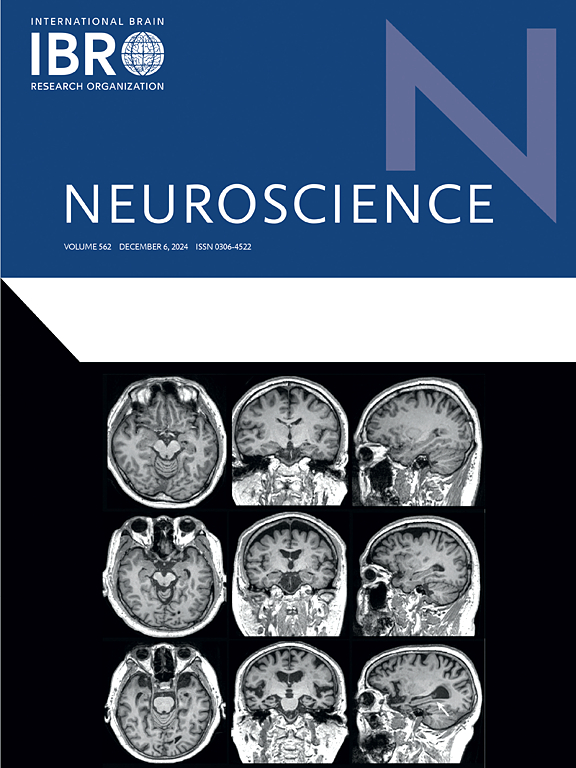Cortical parvalbumin-expressing interneurons sample network oscillations in their synaptic activity
IF 2.9
3区 医学
Q2 NEUROSCIENCES
引用次数: 0
Abstract
Synaptic activity is thought to be the primary input of the frequency bands conveyed in the electroencephalogram (EEG) and local field potentials (LFPs) recorded on the cortex. Here we ask whether synaptic activity observed in parvalbumin expressing (PV + ) neurons recorded in isolated cortical tissue bear these frequency bands. The muscarinic agonist carbachol (CCh) was used to increase cortical excitability. PV + neurons play a significant role in perisomatic inhibition and the synchronization of cortical ensembles to generate gamma (γ) oscillations during cholinergic modulation. γ-oscillations associate with cognitive activities co-existing with slower rhythms. While CCh induces depolarization and firing in pyramidal neurons, it only causes barrages of synaptic potentials without firing in most PV + neurons. We show that the frequency spectra of CCh-induced synaptic events recorded onto layer 5 PV + neurons display the various frequency bands generated by cortical networks: from δ to γ. Isolation of inhibitory events shows potency increases in the δ band and decreases in other bands. Isolated excitatory events exhibit a decrease in the β-band. Excitatory potentials appear to drive the circuitry while inhibitory ones appear to regulate events frequency. Muscarinic M1-class receptors are mainly responsible for the synaptic activity from which oscillatory bands emerge. These results demonstrate that PV + interneurons “sample” network activity through the ligand-gated synaptic events that receive from it. We conclude that random synaptic events recorded in single neurons contain the wide range of brain oscillations as revealed by frequency spectra and power density analyses.
皮层表达小蛋白的中间神经元在其突触活动中采样网络振荡。
突触活动被认为是脑电图(EEG)和皮层记录的局部场电位(LFPs)所传递的频带的主要输入。在这里,我们询问在分离的皮质组织中记录的表达小白蛋白(PV + )的神经元中观察到的突触活动是否具有这些频段。毒蕈碱激动剂恰巴醇(CCh)用于增加皮质兴奋性。PV + 神经元在胆碱能调节过程中,在胞周抑制和皮层集合同步产生γ (γ)振荡中发挥重要作用。γ-振荡与认知活动有关,与较慢的节奏共存。虽然CCh在锥体神经元中诱导去极化和放电,但它只在大多数PV + 神经元中引起突触电位阵而不放电。我们发现,记录在第5层PV + 神经元上的cch诱导的突触事件的频谱显示了皮层网络产生的各种频段:从δ到γ。抑制事件的分离表明,δ波段的效力增加,其他波段的效力降低。孤立的兴奋事件表现为β带的减少。兴奋电位似乎驱动电路,而抑制性电位似乎调节事件的频率。毒蕈碱m1类受体主要负责产生振荡带的突触活动。这些结果表明PV + 中间神经元通过从其接收的配体门控突触事件“采样”网络活动。我们得出结论,在单个神经元中记录的随机突触事件包含广泛的脑振荡,如频谱和功率密度分析所揭示的那样。
本文章由计算机程序翻译,如有差异,请以英文原文为准。
求助全文
约1分钟内获得全文
求助全文
来源期刊

Neuroscience
医学-神经科学
CiteScore
6.20
自引率
0.00%
发文量
394
审稿时长
52 days
期刊介绍:
Neuroscience publishes papers describing the results of original research on any aspect of the scientific study of the nervous system. Any paper, however short, will be considered for publication provided that it reports significant, new and carefully confirmed findings with full experimental details.
 求助内容:
求助内容: 应助结果提醒方式:
应助结果提醒方式:


